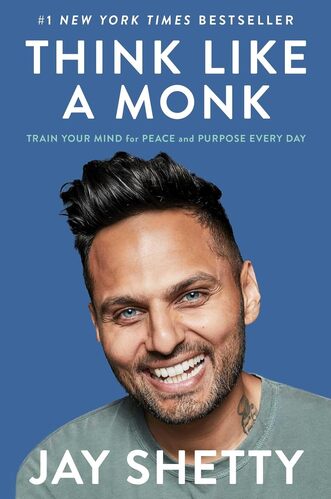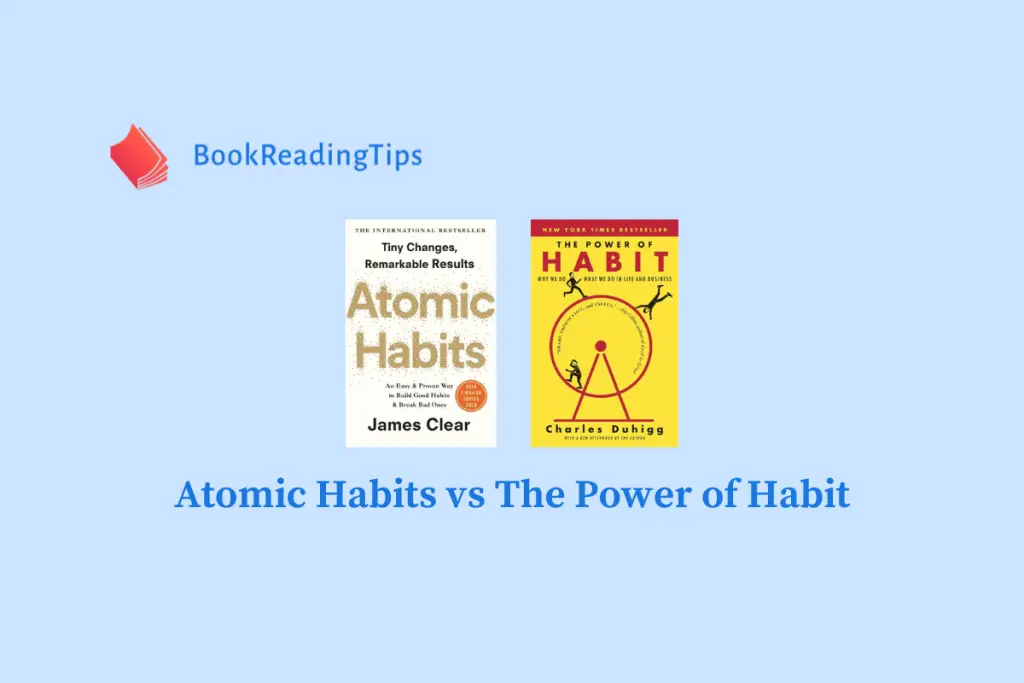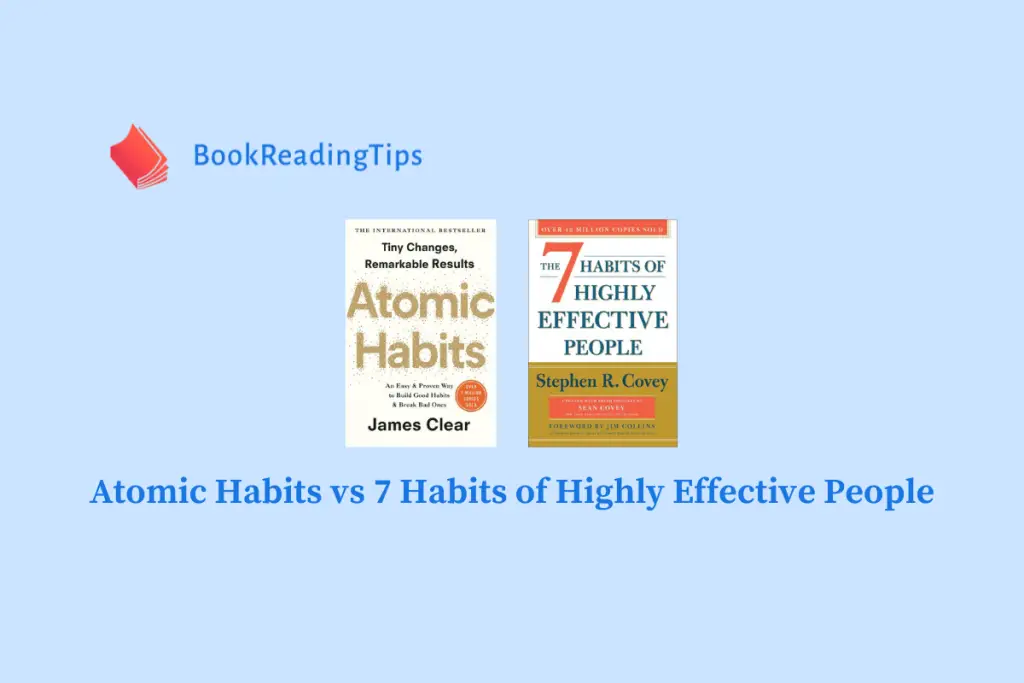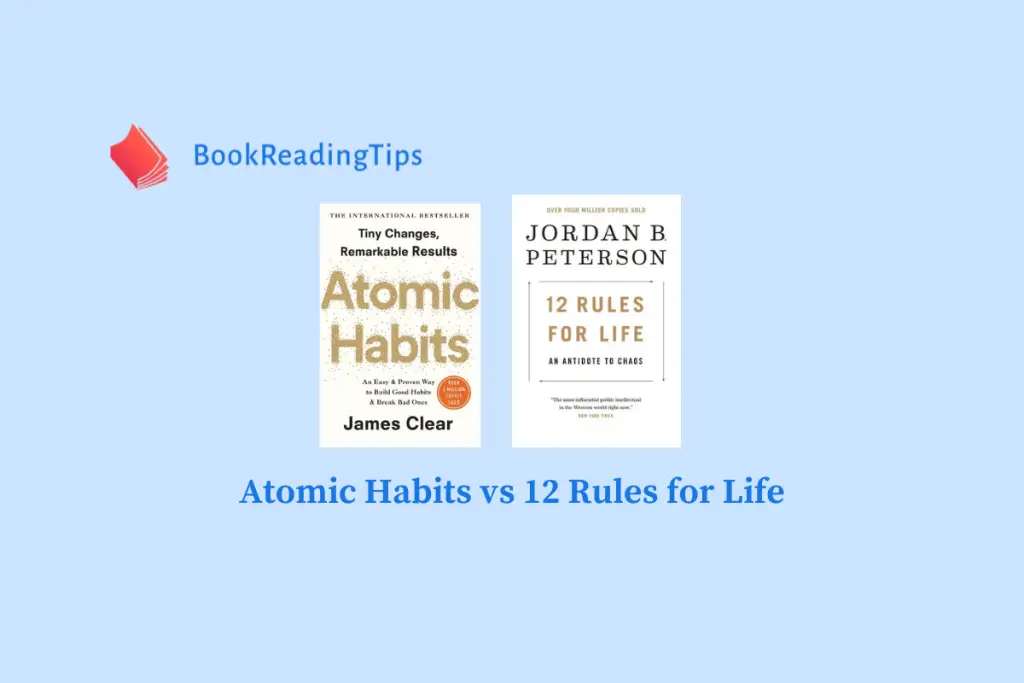“Think Like a Monk” by Jay Shetty and “Atomic Habits” by James Clear are two transformative books that have been making waves in the self-improvement and personal development sphere. “Think Like a Monk” is a profound reflection on how to live a life filled with purpose, peace, and clarity, drawing from Shetty’s experience as a monk in India. On the other hand, “Atomic Habits” is a practical guide on how to form good habits, break bad ones, and master the tiny behaviors that lead to remarkable results. Both books offer valuable insights, but approach self-improvement from different angles.
While both books aim to help readers improve their lives, they differ in their approach and focus. “Think Like a Monk” is more philosophical, exploring the wisdom of ancient traditions and encouraging readers to dig deep into their minds and souls for transformation. It’s ideal for those seeking spiritual growth and inner peace. “Atomic Habits”, meanwhile, is more practical and science-based. It’s perfect for people who want tangible strategies to change their daily habits and routines for the better. Both books, however, complement each other well, providing a holistic approach to personal development.
In my opinion, both “Think Like a Monk” and “Atomic Habits” have their unique merits and can be deeply enriching reads. Whether you’re looking for spiritual enlightenment or practical habit-changing strategies, these books have something to offer. In the following sections, I’ll be delving deeper into each book, discussing their key concepts, strengths, and how they can be applied in our daily lives. So, stay with me as we explore the wisdom these books have to offer and how they can help us live better, more fulfilling lives.
Table of Contents
- Think Like a Monk: Exploring Mindset
- Atomic Habits: Building Better Lives
- Similarities & Differences Between Both Books
- Similarities
- Differences
- FAQs
- 1. What are the main differences between “Think Like a Monk” and “Atomic Habits”?
- 2. Can both books be beneficial to me?
- 3. Which book is more practical for everyday life?
- 4. If I am more interested in self-improvement, which book should I read?
- 5. Are the philosophies in “Think Like a Monk” and “Atomic Habits” conflicting?
- 6. Can I apply the principles of both books simultaneously?
- Conclusion
Think Like a Monk: Exploring Mindset

1. Embracing Monk Mindset
In my opinion, author Jay Shetty does an exceptional job in “Think Like a Monk” to communicate the core principles of a monk’s lifestyle and how these principles can be applied to our everyday lives. The first principle is the concept of detachment. Monks practice the art of detaching themselves from materialistic possessions and emotional attachments. I feel this principle encourages us to focus on our inner selves and find happiness within, rather than seeking it externally.
2. Value of Service & Compassion
Another principle that resonates with me is the value of service and compassion. Monks dedicate their lives to serving others and practicing compassion. They believe in the power of kindness and empathy towards all living beings. Incorporating this principle into our lives can lead to a more fulfilled and content life.
3. Importance of Mindfulness & Meditation
The third principle is the importance of mindfulness and meditation. Monks spend a significant portion of their day in meditation, practicing mindfulness, and achieving inner peace. By incorporating mindfulness into our daily routine, we can achieve a sense of calm and clarity, which can help us in making better decisions and leading a stress-free life.
Atomic Habits: Building Better Lives

1. Small Changes, Big Impact
In “Atomic Habits”, author James Clear emphasizes the power of small, incremental changes. The core idea is that tiny habits when consistently practiced, can lead to significant results over time. I think this principle is incredibly powerful as it takes away the intimidation of big goals and breaks them down into manageable, daily actions.
2. Systems Over Goals
Another principle that Clear strongly advocates for is focusing on systems rather than goals. In my opinion, this is a game-changer. Instead of obsessing over the end goal, if we concentrate on the process or the system that leads to that goal, success becomes a by-product of the process. This principle encourages us to enjoy the journey rather than just wait for the destination.
3. The Two-Minute Rule
The final principle I’d like to highlight is the two-minute rule. The idea is to start a new habit that can be done in two minutes or less. The aim is not to achieve the end goal in two minutes but to establish a routine. Once the routine is set, it can be extended to achieve more complex goals. I feel this principle is extremely practical and can be easily incorporated into our lives to build new habits.
Both these books, “Think Like a Monk” and “Atomic Habits”, offer insightful principles that can help us lead better lives. While they approach personal development from different perspectives, they both emphasize the importance of consistent practice and mindful living.
Similarities & Differences Between Both Books
Similarities
i. Emphasis on Inner Transformation
Both ‘Think Like a Monk’ by Jay Shetty and ‘Atomic Habits’ by James Clear share a common ground in their emphasis on the power of inner transformation. They both believe in the potential of the individual to change their life by changing their mindset and habits. Shetty proposes a spiritual approach rooted in ancient wisdom, while Clear suggests a more scientific approach based on modern psychology.
ii. Importance of Daily Habits
In both books, the importance of daily habits is underscored. Shetty and Clear believe that our daily habits, no matter how small, have a profound impact on the quality of our lives. They both argue that by changing our habits, we can bring about significant changes in our lives.
Differences
i. Approach to Personal Transformation
While both books emphasize personal transformation, they approach it from different perspectives. ‘Think Like a Monk’ encourages us to embrace a monk-like mindset, focusing on values such as detachment, mindfulness, and compassion. Shetty suggests that by adopting these values, we can achieve inner peace and happiness.
On the other hand, ‘Atomic Habits’ focuses on the power of small, incremental changes. Clear argues that by making tiny adjustments to our daily routines, we can develop habits that lead to success.
ii. Focus on Spirituality vs. Science
Another key difference lies in the focus on spirituality versus science. ‘Think Like a Monk’ is deeply rooted in spirituality, drawing heavily on Shetty’s experience as a monk. The book offers practical wisdom from ancient traditions, encouraging readers to seek inner peace and happiness.
Conversely, ‘Atomic Habits’ is more grounded in science, offering insights from behavioral psychology and neuroscience. Clear provides practical strategies for habit formation and change, backed by scientific evidence.
In my opinion, both books offer valuable insights into personal development and transformation. They provide different paths towards the same goal – leading a fulfilling and meaningful life. While their approaches may differ, their underlying message is the same: we have the power to change our lives by changing our mindset and habits.
FAQs
1. What are the main differences between “Think Like a Monk” and “Atomic Habits”?
“Think Like a Monk” by Jay Shetty is a guide to peace, purpose, and happiness through monk mentality, while “Atomic Habits” by James Clear is a practical guide for habit formation and breaking. The former focuses on spirituality and mindfulness, the latter on behavior science.
2. Can both books be beneficial to me?
Yes, both books can be beneficial depending on your needs. “Think Like a Monk” can help if you are seeking inner peace and purpose, while “Atomic Habits” can help if you want to form good habits and break bad ones.
3. Which book is more practical for everyday life?
“Atomic Habits” is more practical for everyday life as it provides tangible strategies for habit formation. However, “Think Like a Monk” also provides practical advice for achieving peace and purpose.
4. If I am more interested in self-improvement, which book should I read?
Both books offer self-improvement insights. “Think Like a Monk” offers a spiritual approach, while “Atomic Habits” offers a behavioral approach. Your choice depends on your preference.
5. Are the philosophies in “Think Like a Monk” and “Atomic Habits” conflicting?
No, the philosophies in both books are not conflicting. “Think Like a Monk” promotes mindfulness and purpose, which can contribute to the successful formation of habits promoted in “Atomic Habits”.
6. Can I apply the principles of both books simultaneously?
Yes, you can apply the principles from both books simultaneously. The mindfulness from “Think Like a Monk” can aid in the habit formation strategies from “Atomic Habits”.
Conclusion
Both “Think Like a Monk” and “Atomic Habits” offer transformative insights into personal growth and development. Jay Shetty’s “Think Like a Monk” encourages readers to seek inner peace and purpose through monk-like mindfulness, detachment, and compassion. On the other hand, James Clear’s “Atomic Habits” focuses on the power of small, consistent actions in creating significant, long-term change.
Despite their different approaches, both books emphasize the importance of self-awareness, discipline, and consistency in personal development. However, they diverge in their methods. “Think Like a Monk” leans towards spiritual and philosophical introspection, while “Atomic Habits” provides more practical, actionable strategies based on scientific research.
Both books are valuable resources for anyone seeking self-improvement. Those interested in spiritual growth and mindfulness may prefer “Think Like a Monk”, while those looking for a more structured, science-based approach to habit formation might find “Atomic Habits” more suitable. Ultimately, both books offer unique perspectives on the journey toward personal growth and happiness.




